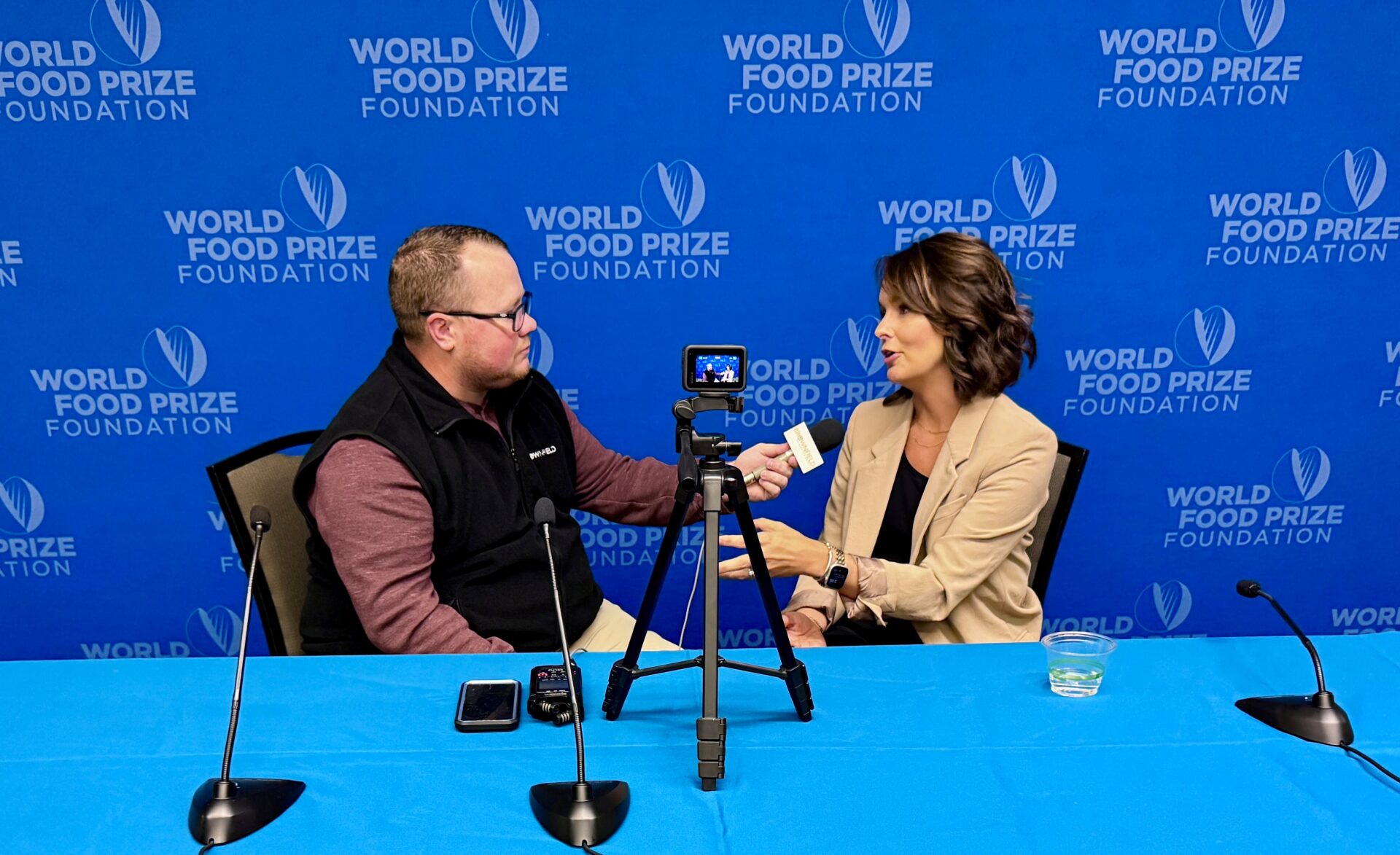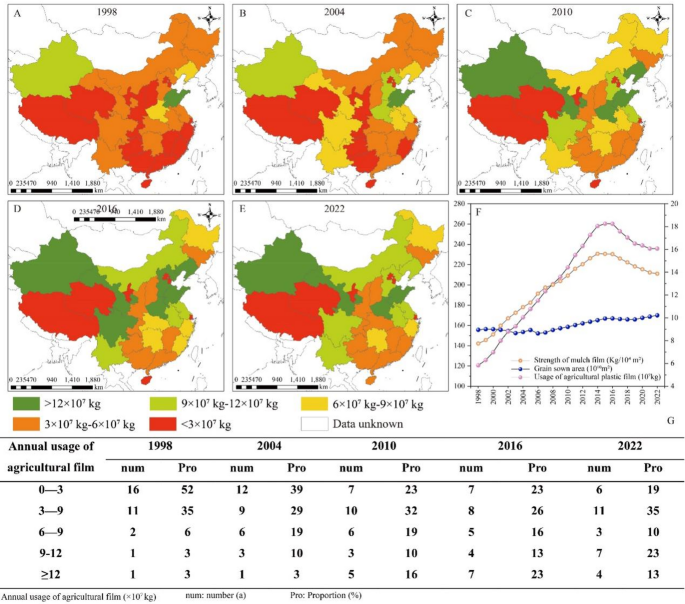Report on the Productive Forests Program and its Contribution to Sustainable Development Goals (SDGs)
Program Overview and Strategic Alignment with SDGs
The CAIXA Socio-Environmental Fund (FSA), in a strategic partnership with the Ministry of Agrarian Development (MDA), has announced the approval of 88 projects under the Productive Forests Program. This initiative represents a significant commitment to advancing the United Nations Sustainable Development Goals (SDGs) by strengthening regenerative agriculture and sustainable development within strategic regions of the Legal Amazon. The collaboration exemplifies SDG 17 (Partnerships for the Goals), leveraging financial and governmental resources to drive sustainable change.
The program’s core mission is to restore degraded ecosystems through sustainable production models, directly addressing several key SDGs:
- SDG 13 (Climate Action): By promoting carbon sequestration and increasing ecosystem resilience.
- SDG 15 (Life on Land): Through the recovery of degraded areas, conservation of biodiversity, and combating deforestation.
- SDG 1 (No Poverty) & SDG 8 (Decent Work and Economic Growth): By creating sustainable income streams for local communities.
- SDG 2 (Zero Hunger): By strengthening food security through sustainable family farming.
Ecosystem Restoration and Climate Action
The initiative is centered on regenerative agriculture, a model that restores soil health, stimulates biodiversity, and enhances ecosystem resilience rather than depleting natural resources. This approach is fundamental to achieving SDG 15 (Life on Land) by reversing land degradation in the critical “Deforestation Arc” region.
The supported production models contribute directly to climate mitigation and adaptation efforts, in line with SDG 13 (Climate Action). Key methods include:
- Agroforestry Systems (SAFs): Integrating trees with agricultural crops to enhance biodiversity and soil health.
- Crop-Livestock-Forest Integration (ILPF): Creating balanced and more productive land-use systems.
- Sustainable Forest Management: Ensuring the long-term viability of forest resources.
These practices improve carbon sequestration, enhance water retention in soil to combat drought, and protect essential ecosystem services like pollination and watershed integrity.
Socio-Economic Development and Community Empowerment
The Productive Forests Program is designed to generate lasting socio-economic benefits, fostering an inclusive green economy. By creating revenue from sociobiodiversity products such as certified timber, nuts, native fruits (açaí, cocoa, cupuaçu), and ecotourism, the initiative directly supports SDG 1 (No Poverty) and SDG 8 (Decent Work and Economic Growth). It empowers vulnerable populations, including family farmers, indigenous communities, extractivists, and agrarian reform settlements.
Furthermore, the program strengthens sustainable family farming, a critical component for promoting SDG 2 (Zero Hunger) by enhancing food security and encouraging the autonomy of local communities. This integrated approach ensures that environmental conservation is linked to improved quality of life and reduced social inequalities.
Financial Scope and Project Details
The high level of engagement from local organizations underscores the demand for sustainable solutions. The public call for proposals, facilitated by the new Social Compass platform, attracted significant interest. A technical summary of the call is provided below:
- Registered Projects: 88
- Total Amount Requested: R$ 368,524,393.13
- Available Resources: R$ 50,000,000.00
- Maximum Funding Per Project: R$ 5,000,000.00
- Targeted States: Acre, Maranhão, Mato Grosso, Pará, and Rondônia
- Expected Final Announcement: COP 30 (November, Belém-PA)
The FSA’s allocation of R$50 million will finance projects dedicated to recovering degraded areas, with the final results set to be announced at COP 30. This timeline positions the initiative as a key example of Brazil’s commitment to global sustainability targets.
Analysis of the Article in Relation to Sustainable Development Goals
1. Which SDGs are addressed or connected to the issues highlighted in the article?
-
SDG 1: No Poverty
- The article highlights that the program aims to “improve the quality of life in communities” and that “Generating income from sociobiodiversity products reduces inequalities,” directly addressing the goal of alleviating poverty through economic empowerment.
-
SDG 2: Zero Hunger
- The program focuses on “regenerative agriculture” and “strengthens sustainable family farming, promotes food security.” This directly supports the goal of ending hunger by improving food production systems and supporting small-scale farmers.
-
SDG 8: Decent Work and Economic Growth
- The initiative is designed to “generate income and jobs” through sustainable activities like producing “certified timber, nuts, native fruits, and even ecotourism.” This promotes a “green and inclusive economy,” aligning with the goal of sustainable economic growth.
-
SDG 10: Reduced Inequalities
- The article states that the program supports “family farmers, indigenous communities, and extractivists” and that generating income “reduces inequalities.” This focus on priority and vulnerable groups is central to SDG 10.
-
SDG 12: Responsible Consumption and Production
- The core of the program is to support “sustainable and inclusive production models,” such as “Agroforestry Systems (SAFs)” and “sustainable forest management.” This aligns with the goal of ensuring sustainable consumption and production patterns.
-
SDG 13: Climate Action
- A key benefit mentioned is that the projects “contribute to carbon sequestration and water conservation, reducing the impacts of climate change.” This directly addresses the need for urgent action to combat climate change.
-
SDG 15: Life on Land
- This is a central theme, with the program’s main objective being to “finance projects to recover degraded areas,” “restore soil, stimulates biodiversity,” and promote “sustainable forest management” and “reforestation” in the Amazon.
-
SDG 17: Partnerships for the Goals
- The article explicitly describes the program as a “partnership with Ministry of Agrarian Development (MDA)” and a collaboration between CAIXA and MDA, which “represents a true alliance for the environment,” embodying the spirit of multi-stakeholder partnerships for sustainable development.
2. What specific targets under those SDGs can be identified based on the article’s content?
-
SDG 1: No Poverty
- Target 1.2: By 2030, reduce at least by half the proportion of men, women and children of all ages living in poverty in all its dimensions. The program’s focus on income generation for rural communities contributes to this target.
-
SDG 2: Zero Hunger
- Target 2.3: By 2030, double the agricultural productivity and incomes of small-scale food producers, in particular family farmers, indigenous peoples and pastoralists. The program directly supports “family farmers” and “indigenous communities.”
- Target 2.4: By 2030, ensure sustainable food production systems and implement resilient agricultural practices that increase productivity and production, that help maintain ecosystems, that strengthen capacity for adaptation to climate change. The focus on “regenerative agriculture” and “Agroforestry Systems” aligns perfectly with this target.
-
SDG 8: Decent Work and Economic Growth
- Target 8.4: Improve progressively, through 2030, global resource efficiency in consumption and production and endeavour to decouple economic growth from environmental degradation. The program’s model of generating revenue from sustainable practices is a direct example of this.
- Target 8.9: By 2030, devise and implement policies to promote sustainable tourism that creates jobs. The mention of “ecotourism” as a revenue source connects to this target.
-
SDG 10: Reduced Inequalities
- Target 10.2: By 2030, empower and promote the social, economic and political inclusion of all, irrespective of age, sex, disability, race, ethnicity, origin, religion or economic or other status. The program’s focus on “family farmers, indigenous communities, and extractivists” aims to achieve this.
-
SDG 12: Responsible Consumption and Production
- Target 12.2: By 2030, achieve the sustainable management and efficient use of natural resources. The implementation of “sustainable forest management” and regenerative practices directly addresses this target.
-
SDG 13: Climate Action
- Target 13.1: Strengthen resilience and adaptive capacity to climate-related hazards and natural disasters in all countries. The article mentions making farming systems “more resistant to periods of drought.”
-
SDG 15: Life on Land
- Target 15.2: By 2020, promote the implementation of sustainable management of all types of forests, halt deforestation, restore degraded forests and substantially increase afforestation and reforestation globally. The program is centered on “reforestation” and “sustainable forest management.”
- Target 15.3: By 2030, combat desertification, restore degraded land and soil, including land affected by desertification, drought and floods, and strive to achieve a land degradation-neutral world. The program’s goal is to “recover degraded areas” and “restore soil.”
- Target 15.5: Take urgent and significant action to reduce the degradation of natural habitats, halt the loss of biodiversity and, by 2020, protect and prevent the extinction of threatened species. The program aims to “stimulate biodiversity” and preserve ecosystems.
-
SDG 17: Partnerships for the Goals
- Target 17.17: Encourage and promote effective public, public-private and civil society partnerships, building on the experience and resourcing strategies of partnerships. The collaboration between the CAIXA Socio-Environmental Fund (a financial institution) and the Ministry of Agrarian Development (a government body) is a clear example.
3. Are there any indicators mentioned or implied in the article that can be used to measure progress towards the identified targets?
- Financial Investment: The article specifies “R$50 million” in available resources and a “Total amount requested: R$ 368.524.393,13,” which are quantitative indicators of the financial commitment to sustainable development.
- Number of Projects: The selection of “88 projects” serves as a direct indicator of the scale and implementation of the program.
- Geographic Coverage: The focus on specific states (“Acre, Maranhão, Mato Grosso, Pará and Rondônia”) within the “Deforestation Arc” is an indicator of targeted action in critical areas for ecosystem restoration.
- Adoption of Sustainable Practices: The implementation of specific models like “Agroforestry Systems (SAFs),” “Crop-Livestock-Forest Integration (ILPF),” and “sustainable forest management” can be measured and tracked as an indicator of progress.
- Economic Benefits: The article implies measuring progress through “revenue,” “income,” and “jobs” generated from sociobiodiversity products, which are quantifiable economic indicators.
- Environmental Outcomes: Progress can be measured by tracking implied indicators such as the amount of “carbon sequestration,” improvements in “water conservation,” the area of “degraded areas” recovered, and increases in “biodiversity.”
- Social Impact: The number of “family farmers, indigenous communities, and extractivists” benefiting from the program can be used as a social indicator to measure the reduction of inequality and poverty.
4. Table of SDGs, Targets, and Indicators
| SDGs | Targets | Indicators Identified in the Article |
|---|---|---|
| SDG 1: No Poverty | 1.2: Reduce poverty in all its dimensions. | Income generated from sociobiodiversity products; Improved quality of life in communities. |
| SDG 2: Zero Hunger | 2.3: Double productivity and incomes of small-scale food producers. 2.4: Ensure sustainable and resilient food production systems. |
Number of family farmers supported; Implementation of regenerative agriculture and Agroforestry Systems (SAFs). |
| SDG 8: Decent Work and Economic Growth | 8.4: Decouple economic growth from environmental degradation. 8.9: Promote sustainable tourism. |
Number of jobs created; Revenue generated from sustainable products (timber, nuts, fruits) and ecotourism. |
| SDG 10: Reduced Inequalities | 10.2: Promote social and economic inclusion of all. | Number of family farmers, indigenous communities, and extractivists included in the projects. |
| SDG 12: Responsible Consumption and Production | 12.2: Achieve sustainable management and efficient use of natural resources. | Adoption of sustainable production models and sustainable forest management practices. |
| SDG 13: Climate Action | 13.1: Strengthen resilience to climate-related hazards. | Amount of carbon sequestration; Increased resistance of farming systems to drought. |
| SDG 15: Life on Land | 15.2: Promote sustainable forest management and halt deforestation. 15.3: Restore degraded land and soil. 15.5: Halt biodiversity loss. |
Area of degraded land recovered; Increase in biodiversity; Area under sustainable forest management. |
| SDG 17: Partnerships for the Goals | 17.17: Encourage effective public, public-private and civil society partnerships. | Number of projects (88) resulting from the partnership; Total financial resources mobilized (R$50 million). |
Source: en.clickpetroleoegas.com.br






